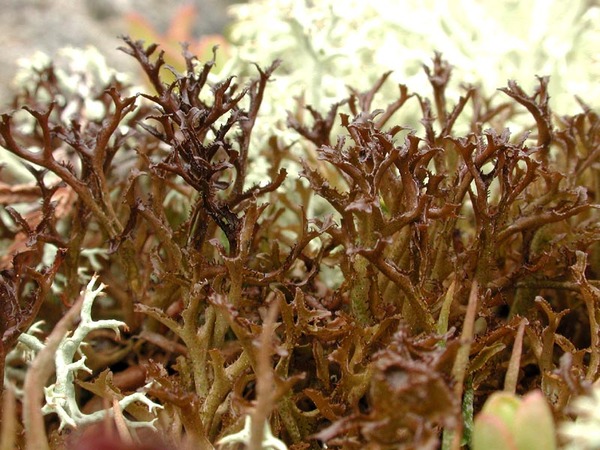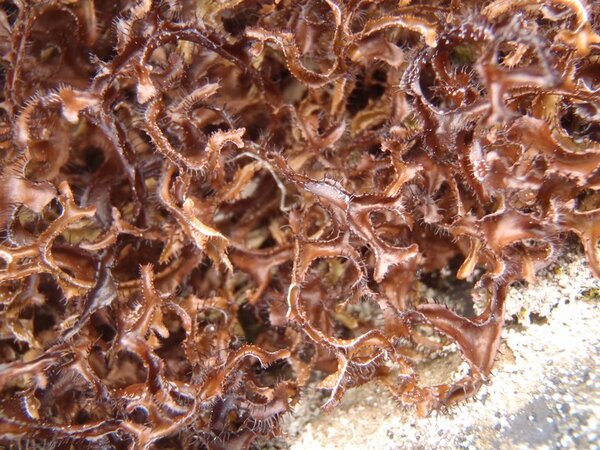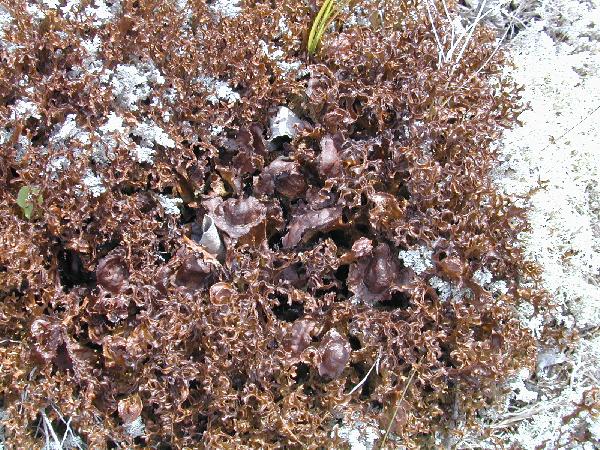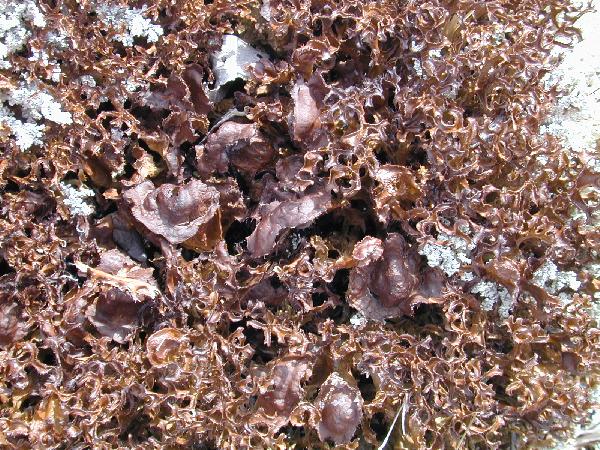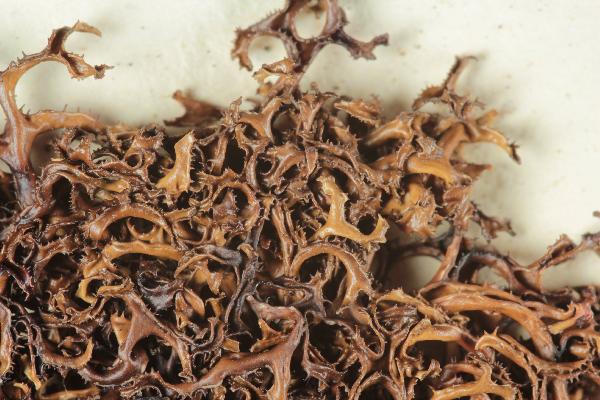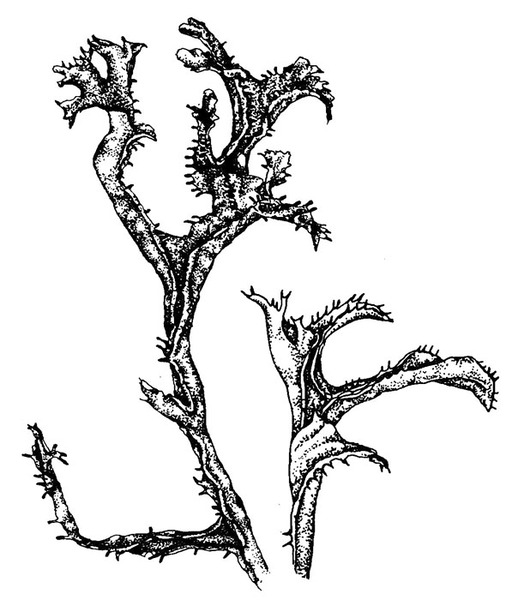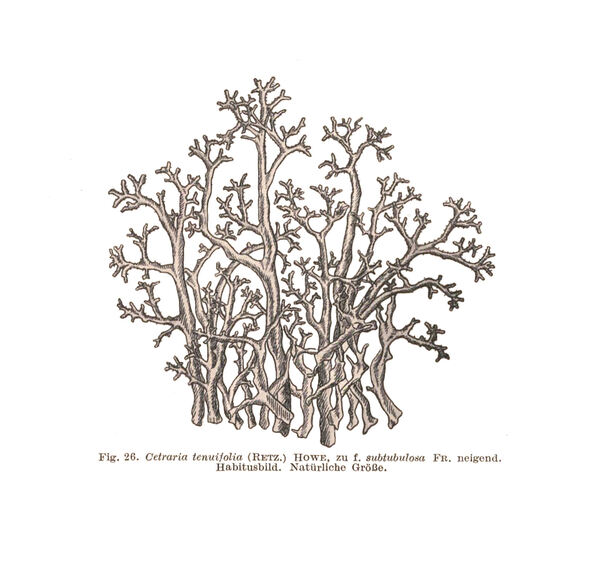Cetraria ericetorum Opiz
Seznam Rostlin Kveteny Ceské: 173, 1852.
Synonyms: Cetraria crispa (Ach.) Nyl.; Cetraria crispa var. subnigricans Nyl.; Cetraria islandica f. subnigricans (Nyl.) Dalla Torre & Sarnth.; Cetraria islandica var. crispa Ach.; Cetraria islandica var. subtubulosa Fr.; Cetraria islandica var. tenuifolia (Retz.) Vain.; Cetraria subtubulosa (Fr.) Zopf; Cetraria tenuifolia (Retz.) R. Howe
Distribution: N - Frl (Tretiach & Hafellner 2000), Ven (Nascimbene & Caniglia 1997, 2003c, Caniglia & al. 1999), TAA (Caniglia & al. 2002, Nascimbene & al. 2005, 2006, 2022, Nascimbene 2008b, Lang 2009, Bilovitz & al. 2014, 2014b), Lomb (Rossi & al. 1998, Dalle Vedove & al. 2004), Piem (Morisi & Sereno 1995, Isocrono & al. 2004, Morisi 2005), VA (Verger & al. 1993, Borlandelli & al. 1996, Piervittori & Isocrono 1997, 1999, Valcuvia 2000, Piervittori & al. 2001, 2004, Isocrono & al. 2008), Emil (Fariselli & al. 2020). C - Umb (Genovesi & al. 2002, Ravera & al. 2006), Abr (Nimis & Tretiach 1999, Brackel 2015, Di Nuzzo & al. 2021, Gheza & al. 2021, Vallese & al. 2022), Mol (Caporale & al. 2008).
Description: Thallus fruticose, dark brown, somehow glossy, the basal portions reddish, loosely attached, often forming dense tufts. Lobes 0.5-2(-3)mm wide, to 8-9 cm tall (usually less), smooth, erect, strongly channelled, curved, more or less tubular, with numerous marginal spinules bearing pycnidia, and maculiform to elongate pseudocyphellae restricted to the margins of the lower surface, which is of the same colour as the upper surface, or slightly paler. Cortex 2-layered, with an external layer of brownish, thick-walled, paraplectenchymatous cells, and an inner layer of periclinally arranged hyphae; medulla white. Apothecia extremely rare (never found in Italian material), lecanorine, mostly subterminal, with a dark brown disc and an often crenulate thalline margin. Epithecium brownish; hymenium and hypothecium colourless. Asci 8-spored, narrowly clavate, with a small axial body and a distinct, K/I+ blue ring-structure in the rather large tholus, approaching the Lecanora-type. Ascospores 1-celled, hyaline, ellipsoid, 5-9 x 2-4 µm. Pycnidia dark, immersed in the spinules. Conidia fusiform, multiseptate, 6-7.5 x 1 µm. Photobiont chlorococcoid. Spot-tests: medulla K-, C-, KC-, P-, UV-. Chemistry: lichesterinic and protolichesterinic acid.
Note: an arctic-alpine, circumpolar species, with optimum on wind-exposed ridges on siliceous substrata near or above treeline; common throughout the Alps, but much rarer than C. islandica in the Apennines.
Growth form: Fruticose
Substrata: soil, terricolous mosses, and plant debris
Photobiont: green algae other than Trentepohlia
Reproductive strategy: mainly asexual, by thallus fragmentation
Commonnes-rarity: (info)
Alpine belt: very common
Subalpine belt: rather rare
Oromediterranean belt: absent
Montane belt: absent
Submediterranean belt: absent
Padanian area: absent
Humid submediterranean belt: absent
Humid mediterranean belt: absent
Dry mediterranean belt: absent

Predictive model
Herbarium samples
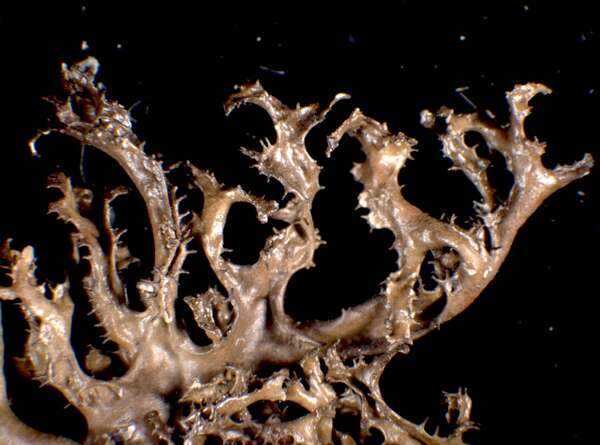

P.L. Nimis; Owner: Department of Life Sciences, University of Trieste
Herbarium: TSB (9362)
2001/12/05
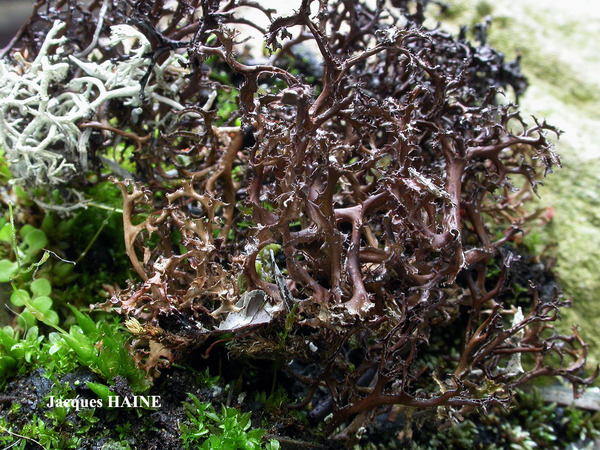
Jacquesa Haine - Source: http://www.lichensmaritimes.org/index.php?task=fiche&lichen=1329&lang=en
France, Alpes Maurienne

Jacquesa Haine - Source: http://www.lichensmaritimes.org/index.php?task=fiche&lichen=1329&lang=en
France, Alpes Maurienne
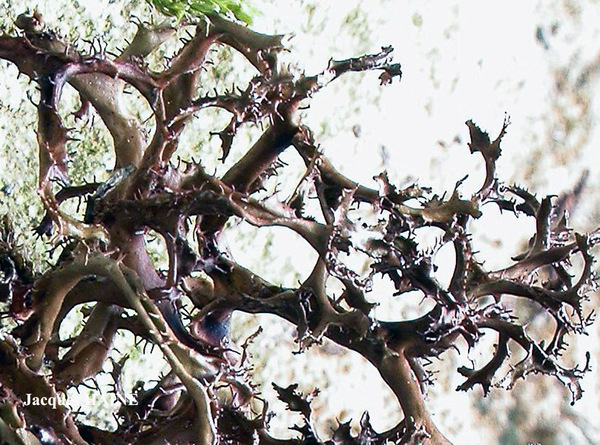
Jacquesa Haine - Source: http://www.lichensmaritimes.org/index.php?task=fiche&lichen=1329&lang=en
France, Alpes Maurienne
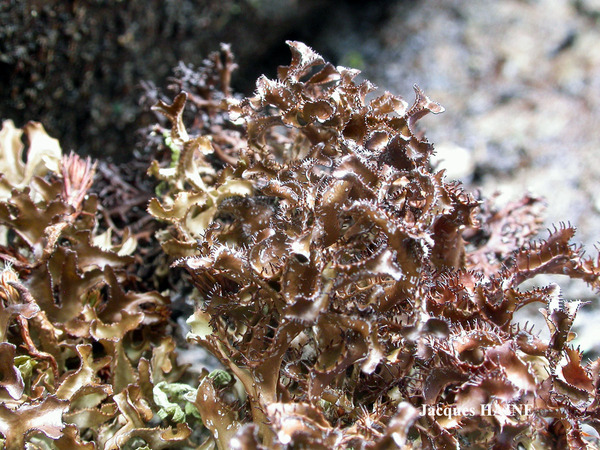
Jacquesa Haine - Source: http://www.lichensmaritimes.org/index.php?task=fiche&lichen=1329&lang=en
France, Alpes Maurienne

Bernard Bouffinier - Source: http://www.lichensmaritimes.org/index.php?task=fiche&lichen=1329&lang=en
Sweden
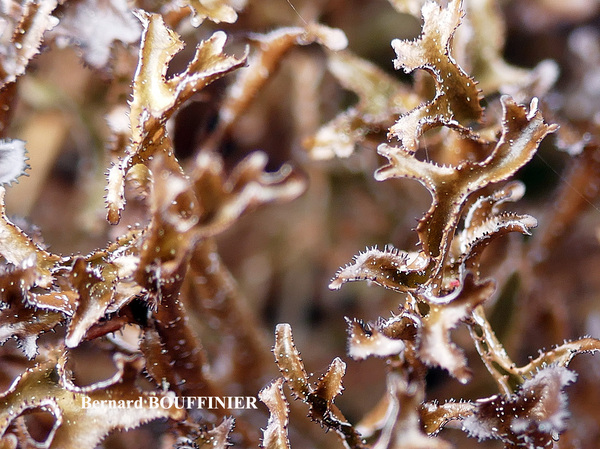
Bernard Bouffinier - Source: http://www.lichensmaritimes.org/index.php?task=fiche&lichen=1329&lang=en
Sweden
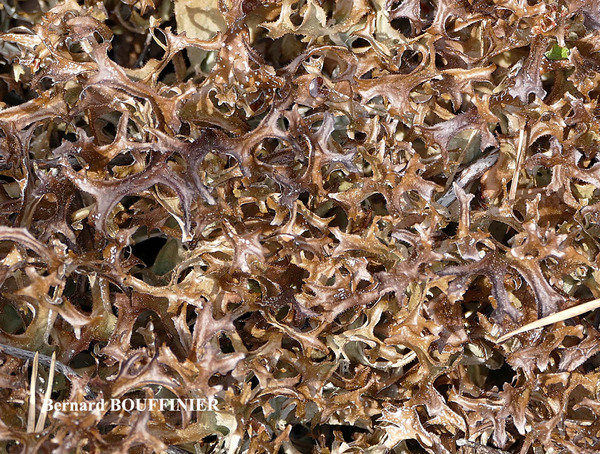
Bernard Bouffinier - Source: http://www.lichensmaritimes.org/index.php?task=fiche&lichen=1329&lang=en
Sweden
Growth form: Fruticose
Substrata: soil, terricolous mosses, and plant debris
Photobiont: green algae other than Trentepohlia
Reproductive strategy: mainly asexual, by thallus fragmentation
Commonnes-rarity: (info)
Alpine belt: very common
Subalpine belt: rather rare
Oromediterranean belt: absent
Montane belt: absent
Submediterranean belt: absent
Padanian area: absent
Humid submediterranean belt: absent
Humid mediterranean belt: absent
Dry mediterranean belt: absent

Predictive model
| Herbarium samples |


P.L. Nimis; Owner: Department of Life Sciences, University of Trieste
Herbarium: TSB (9362)
2001/12/05

Jacquesa Haine - Source: http://www.lichensmaritimes.org/index.php?task=fiche&lichen=1329&lang=en
France, Alpes Maurienne

Jacquesa Haine - Source: http://www.lichensmaritimes.org/index.php?task=fiche&lichen=1329&lang=en
France, Alpes Maurienne

Jacquesa Haine - Source: http://www.lichensmaritimes.org/index.php?task=fiche&lichen=1329&lang=en
France, Alpes Maurienne

Jacquesa Haine - Source: http://www.lichensmaritimes.org/index.php?task=fiche&lichen=1329&lang=en
France, Alpes Maurienne

Bernard Bouffinier - Source: http://www.lichensmaritimes.org/index.php?task=fiche&lichen=1329&lang=en
Sweden

Bernard Bouffinier - Source: http://www.lichensmaritimes.org/index.php?task=fiche&lichen=1329&lang=en
Sweden

 INDEX FUNGORUM
INDEX FUNGORUM
 GBIF
GBIF
 DOLICHENS
DOLICHENS
